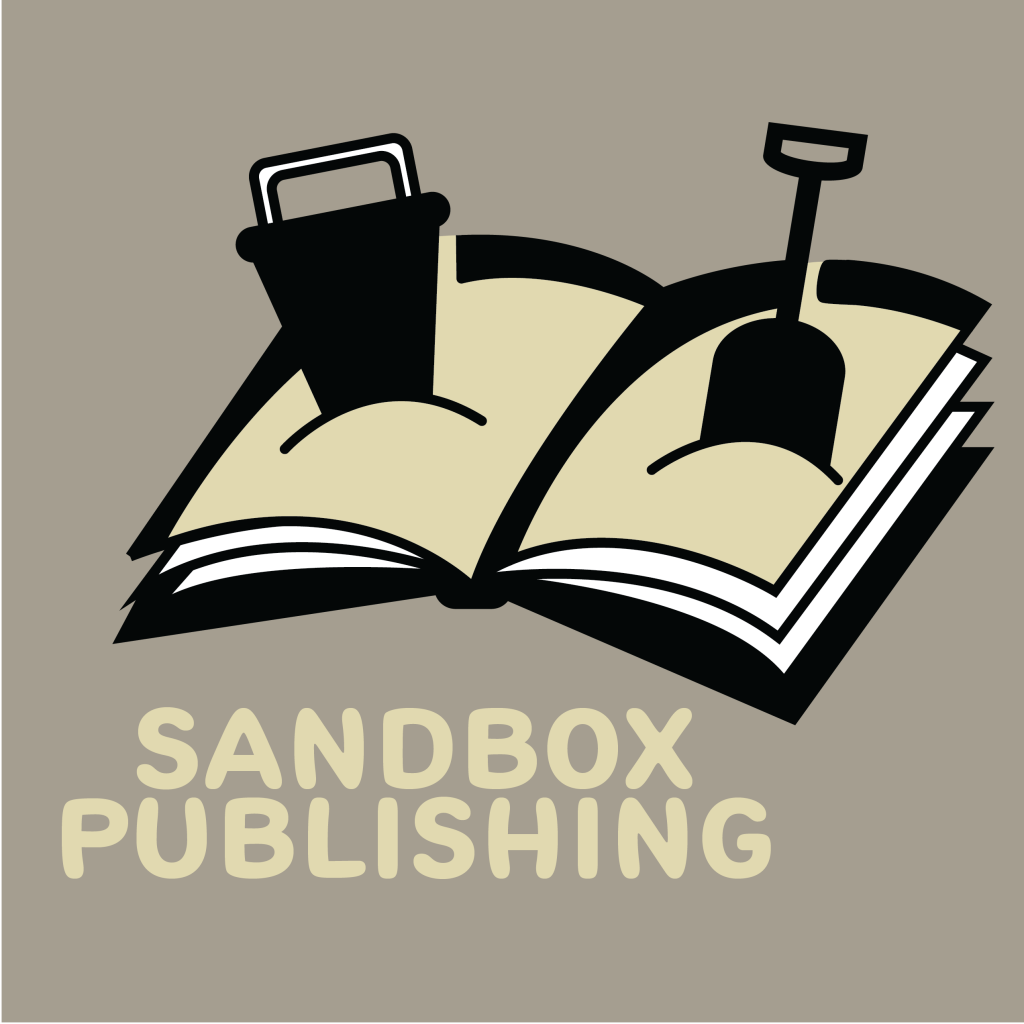For the first project, I wanted to create a logo that was simple and could be recognizable for what I was trying to accomplish. I knew from the start I wanted to marry two icons together, and after much trial and error, I decided on combining an open book with a sandbox. Stylistically, the two elements paired well together as they both were composed of similar geometric shapes, and brand-wise a sandbox would represent all the limitless creative potential that I wanted by publishing company to be known for. I decided to include two well-known objects to help convey that my image was a sandbox: a shovel and a pail.
I first tried creating the book from a birds-eye perspective, looking straight down on it with sand covering the entire surface. But this did not create an interesting design that really popped out at me, so I did another attempt from a sideview, and this become my final image. I knew from the onset I only wanted to use a few colors, so I experimented with different sand colors until I found one that felt natural, and only used black and white for the remainder.
For typography, I knew I wanted something light and inviting that would translate the hardworking, but creative outlook my brand would be known for. I chose one called “Pinecone” on Adobe Fonts that felt simple but fun and utilized the same sand color as my image for consistency.
I am happy with how my design ultimately turned out and I feel I made a logo that can translate well to any size and be recognizable. I do think I could have added more details in the sandbox itself- maybe pebbles or just texture to further convey the sand- but I am still confident that most people will be able to immediately understand what I am going for.

